HOW TO MAKE CHECKED PATTERNS

For any checked pattern create a block using equal slices of two colors … or as many contrasting colors as you like. Make sure the two ends do not have the same color. You flip every second piece so the colors are opposite each other as seen in the two left hand pieces below.

Then you re stack them taking care to make sure the pattern matches on all sides. Use a light coat of slip or a quick spritz of water between layers. Don’t use too much liquid, just enough to cover. It’s that easy.
However, you do not have to stick to two colors or even slices or plain slabs. You can stack whatever you want in any order you want … with or without slip.
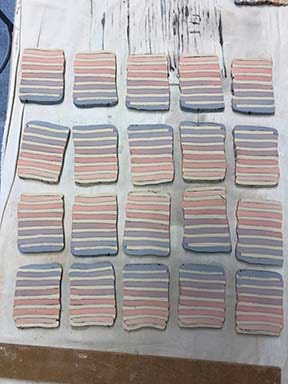
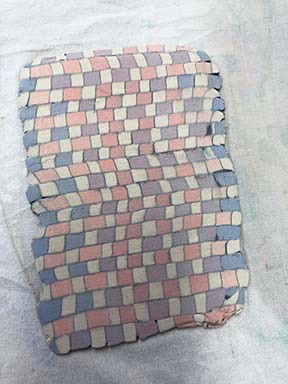
The match does not have to be perfect … go with your own creative ideas.
When you are done, gently drop this on all sides to firm up the attachment. Wrap the loaf in a dampish cloth, seal it in a plastic bag and let the loaf rest overnight before using.
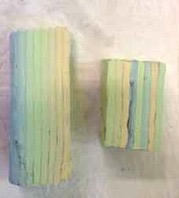
Store the finished loaves on the sides like this so the weight of the loaf does not squash your pattern.
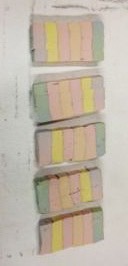
Make checked patterns from as few/many different colors as you like. The stripes can be equal sizes or different. Whatever you want.
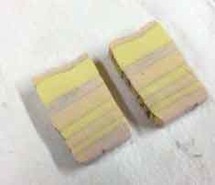
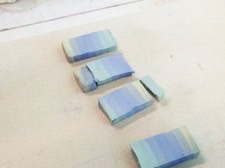
Sometimes with multiple colors, you cannot simply alternate the slices because the center stays the same. The slices on the right all have the same two colors in the middle. This can ruin a random look.
The fix for this is simple. You cut apart the layers and move the center colors to the top or bottom.
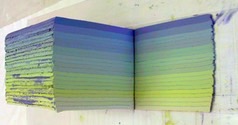
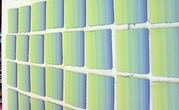
If you want to create a precise check that holds its shape, you have to let the slices set up a bit until they are firm.
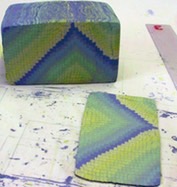

I would store these patterns on their faces so as to keep the pattern as true as possible. If you stored this as shown, the weight would eventually smush down the bottom layers.
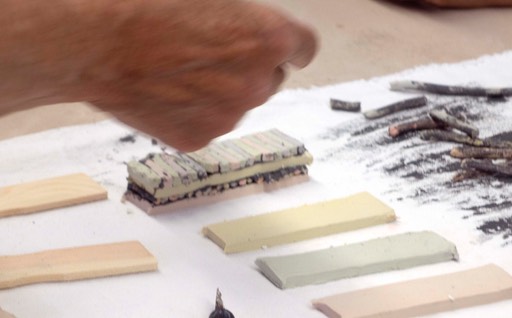
This is true for inserts of extrusions that you want to keep round or square. They have to be firm.
Saving these types of precise patterns over the years involves rotating it every so often because the side it is resting on will start to collapse under the weight above and thin out thus ruining your precise pattern.
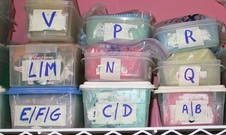
A recommended way to store your patterns is to wrap them in a damp cloth ( I use torn up old T-shirts ) then wrap in plastic and store in a plastic bag or container. You can fire a small sample to keep with the cane for easy identification.
Thanks to Erika Sanger, Judy Goodstein & Heidi McKenzie for the images.
For more options and information on coloring clay, look at the WORKSHOP pages of my site to find a class near you. If there isn't one, consider recommendingmy workshops to an Arts Center in your area.


